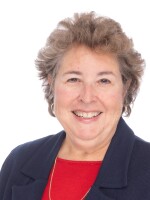You’ve heard the saying: money is the root of all evil, and it’s probably at the root of problems at UVA. The system is, for example, under pressure to grow so it can negotiate better rates of reimbursement. Michael Dickstein is an economist at NYU’s Stern School of Business.
“There’s actually a bargaining that goes on between the insurers and the hospital systems and the insurers for the reimbursement rates they’re going to be paid for the services,” he explains.
And at Northwestern University, health economist Lindsay Allen explains that bigger health systems may provide more cost-effective care.
“Larger health care systems can buy in bulk," she says. "A larger system should be – in theory – able to improve their care coordination and patient outcomes, reducing duplication of services and administrative waste.”
But it’s not easy for UVA to get bigger. Its hometown – Charlottesville – is just over 45,000 people, and even with surrounding counties, the population is under 400,000.
To expand its footprint, UVA bought three hospitals in Northern Virginia and a minority interest in Hampton Roads’ Riverside Health. With new debt on the books, the pressure may be on to make more money.
Costs are also rising for labor, medications and supplies. At Harvard, physician and MBA Jeff Levin Scherz says UVA is a non-profit, but it still has to make money.
“If they want to invest in new technology, if they want to build up-to-date facilities, they need to have margin, because they can’t borrow money if they’re just breaking even,” he says.
And at the University of Maryland’s Smith School of Business Professor Tej Anand adds that investing in new technologies is both expensive and essential to healthcare’s future.
“The first category is information technology, which is the electronic health record. The second part is all the technologies related to diagnostics, and then the third is the technology to cure.”
Ironically, some technologies may cost medical centers revenue in the long run. Again, Northwestern economist Lindsay Allen.
“We now have telemedicine as an option. Health systems can reach patients everywhere where broadband or phone lines are available without having to have a physical presence in every area. That’s always going to be less expensive than having the patient take up a very pricy bed in a hospital where you have to have an MRI machine up and running every second of the day. You have to have every kind of specialist just in case.”
And some newer medications may prevent problems that now fill hospital beds. NYU’s Michael Dickstein says drugs like Ozempic and Wegovy reduce the risk of diabetes and promote weight loss, so people are less likely to suffer heart attacks and strokes.
“If those types of treatments keep patients out of the hospital, it’s a good thing for patients. It’s a good thing for insurers, but it also reduces the volume at hospitals.”
Excess capacity costs health systems money. Lisa Goodlett is CFO at Duke University’s Medical Center.
“We’re probably across the United States almost at 50% more acute beds than we need.”
It’s hard to tell whether all these challenges have caused money problems at UVA. For the last three years the state’s auditor has scolded management for poor planning and insufficient accounting resources.
In 2023 it flagged $19 million in mistakes, and last year the auditor found an overpayment of $34.8 million and unrecorded wire transfers of $62.4 million. It pointed to a lack of documentation, the need to make $23 million in adjustments and warned that sloppy and tardy bookkeeping put the system at risk for errors, fraud and damage to the state’s bond rating.
Enter CEO Craig Kent who's paid $1.6 million to manage the multi-billion-dollar organization. He has reportedly tried to improve revenue by requiring doctors to work a minimum of four billable hours a day caring for patients. That’s a tall order according to Northwestern’s Lindsay Allen.
“In a research or an academic institution, providers don’t just have clinical duties. They have research duties, and they have teaching duties. We’re requiring them to juggle more administrative tasks. They have to document everything, and they’re having to do patient care, and the result is physicians burning out.”
We spoke with UVA doctors who confirmed those very problems.
In these financially challenging times, experts say CEOs need to build true partnerships with physicians – giving them greater input and heeding their advice. Harvard’s Jeff Levin-Scherz and Lisa Goodlett at Duke.
“Successful CEOs have good relationships with their doctors. They have empathy for the patients, and they start from: How do I make the patient experience better without hurting the doctor’s experience?” says the University of Maryland's Tej Anand.
“Successful CEOs need to have a clear vision, a clear mission, and they also need to be great communicators,” adds Harvard's Jeff Levin-Scherz.
“You have to be a phenomenal listener," says Duke's Lisa Goodlet. "You have to have a high level of empathy, because we are nothing without our workforce, and how you keep their hearts and minds engaged is critically important.”
UVA’s CEO would likely get failing marks from 128 physicians who signed a letter asking that he be fired – accusing him of creating a climate of fear at UVA and putting patient safety at risk.



